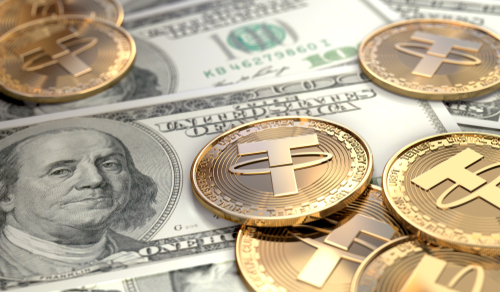Do We Still Need Stablecoins?

This blog post will cover:
- USDT and USDC
- Stablecoins to keep an eye on
In the world of crypto, which is inherently volatile, stablecoins seem to be a more trustworthy option to some because their value is pegged to fiat currencies or other traditional commodities. At the same time, if the way stablecoins work is more or less the same for all such projects, should users pay attention to new ones? In this article, we at SimpleSwap are going to sort it all out with the help of an expert.
Stablecoins are a tool for fixing volatility due to their stable peg to the dollar or other fiat currency. Some stablecoins are pegged to exchange-traded products (ETPs), crypto baskets, and even gold.
In recent years, regulatory authorities in different countries pay great attention to stablecoins due to the growing popularity of crypto-assets. They are especially interested in the two most well-known projects, USDC Circle and USDT Tether.
USDT and USDC
From the point of view of the sustainability of the USDT business model, the project is quite stable and has a high level of user trust as well as a huge capitalization. The substantial proceeds of the project made it possible to pay an $18 million fine to the US regulator SEC following a 2019 US antitrust lawsuit. Aside from that, during the course of 2022, Tether, which manages the the USDT stablecoin issue, is being reviewed by the US Department of Justice for bank fraud and providing false information about the status of stablecoin collateral.

Another popular stablecoin, USDC, has more transparent collateral in the form of fiat currencies and short-term treasury bonds. According to the information from Grant Thornton, which conducted an audit in 2022, the collateral exceeds the issue of USDC by $100 million. The problem with this stablecoin is its centralization. In August, the Treasury Department required Circle to block wallets associated with the Tornado Cash service because of sanctions. The amount of frozen USDC exceeded the equivalent of $750,000.
The centralized governance of USDC and USDT, according to users, leads to regular inconsistencies with the users’ expectations and actions that violate their property rights.
Yet still, it was USDT and USDC that filled the crypto market with enough fiat currency. Despite the collapse of the very popular decentralized, algorithmic stablecoins, they have demonstrated the resilience of their business model amid the general panic. Projects regularly defend their name despite the attacks of various researchers and prosecutors, and in doing so, maintain a growing rate of adoption. However, some experts believe the stablecoin market requires projects that are more transparent in terms of collateral. This demand leaves room for the development of less popular projects issuing fiat-backed stablecoins.
Stablecoins to keep an eye on
Here are some projects that are worth paying attention to:
- USDP is a stablecoin 100% backed exclusively by US fiat dollars. Paxos Trust Company is the issuer of this stablecoin; it conducts extensive financial activities in the United States. The project is regulated by the New York State Department of Financial Services.
- PAXG is a stablecoin that is backed by real gold. One PAXG coin is backed by one troy ounce of gold. The coin is owned, centrally issued, and withdrawn from circulation by the issuer Paxos Trust Company.
- DAI is an alternative fiat stablecoin backed by smart contracts with an excessive amount of ETH cryptocurrency. This form of collateral is considered fair and transparent, and it also preserves the decentralized governance of the stablecoin, which is in line with the primary goal of crypto-assets laid down by Satoshi Nakamoto.
SimpleSwap reminds you that this article is provided for informational purposes only and does not provide investment advice. All purchases and cryptocurrency investments are your own responsibility.

